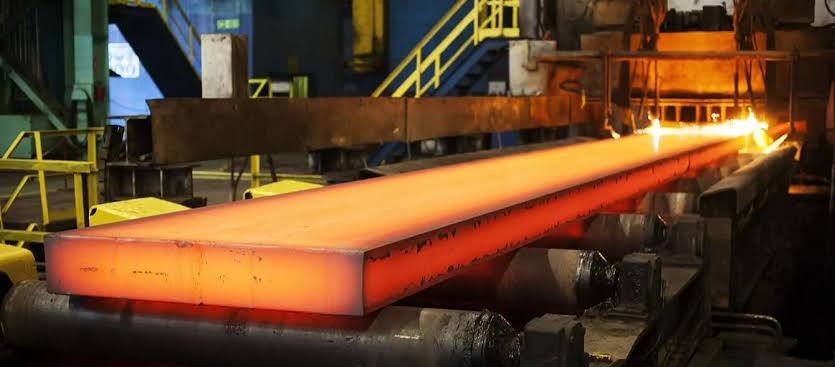Hanoi, July 08, 2024, The Europe Today: The domestic steel industry in Vietnam is projected to grow by 7-8 percent this year, reflecting a positive trend despite facing significant challenges, according to the Vietnam Steel Association (VSA).
The VSA reports that the total production capacity for crude steel in Vietnam is approximately 23 million tonnes, while the capacity for finished steel products, including construction steel, hot and cold rolled coils, galvanized sheets, and pipes, stands at around 38.6 million tonnes per year. Finished steel production for this year is expected to reach 30 million tonnes, a 7 percent increase from 2023. However, this recovery remains uncertain due to ongoing issues.
Challenges in Steel Production
The Vietnamese steel industry is currently grappling with oversupply and increased imports, leading to intense price competition for domestic steel products. Nghiêm Xuân Đa, Chairman of the VSA, noted a significant surge in hot rolled steel (HRC) imports, with April 2024 seeing 890,000 tonnes imported, which is 1.5 times the total domestic production. A substantial 71 percent of this imported HRC comes from China.
In the first four months of 2024, Vietnam imported a total of 3.93 million tonnes of HRC, marking a 32 percent increase compared to the same period in 2023 and equating to 159 percent of the domestic HRC production volume. Imports from China alone amounted to 2.9 million tonnes, more than double the imports from the same period in 2023. This marks the first time that Vietnam’s HRC imports have exceeded domestic production within a year.
The influx of imports has adversely affected the production output of Vietnam’s two domestic HRC producers, Formosa and Hòa Phát. Their production has decreased to 73 percent of design capacity, down from 86 percent in 2021, largely due to unfair competition from imported goods sold below cost. Import prices have also fallen sharply, from $613 per tonne at the beginning of 2023 to $541 per tonne by the end of the year.
As a result, the domestic market share of Formosa and Hòa Phát has dropped from 45 percent in 2021 to 30 percent in 2023. The trend of increasing imports is expected to persist, potentially undermining efforts to produce high-quality steel autonomously in Vietnam.
Trade Remedies Needed
Phan Đăng Tuất, Chairman of the Vietnam Supporting Industry Association, highlighted that while Vietnam initially imported HRC due to the high investment and technological requirements of producing it domestically, investments by Formosa Hà Tĩnh and Hòa Phát have now enabled Vietnam to produce competitive products. Despite this, the continued large-scale importation of HRC, especially at prices below production costs, poses a serious threat to domestic production and market stability.
To address these challenges, the VSA has recommended that relevant agencies enhance the regulatory framework and establish stringent technical and quality management standards to prevent substandard steel products from entering the Vietnamese market. The Ministry of Industry and Trade has been urged to implement trade remedies to combat unfair competition and safeguard domestic production.
Furthermore, the ministry is expediting the development of the Vietnam Steel Industry Development Strategy, targeting completion by 2030 with a vision extending to 2050. This strategy will incorporate policies aimed at promoting green and sustainable growth within the steel industry.
In the absence of a finalized steel industry development strategy, measures are being proposed to manage investments in large-scale steel projects. These are intended to balance supply and demand, prevent resource wastage, protect land capital, minimize environmental impacts, reduce greenhouse gas emissions, and promote green production and consumption practices.


